Unpacking Autism and Public Figures: The Context
Discussion around the neurodevelopmental condition autism spectrum disorder (ASD) often intensifies when public figures become subjects of speculation regarding their neurological differences. This article seeks to explore autism broadly, explain therapies such as Applied Behavior Analysis (ABA), and consider the kind of challenges faced in identifying autism in individuals, including those in the public eye like actor Keir Gilchrist. While there is no official information confirming whether Keir Gilchrist is autistic, understanding the spectrum, its diagnosis, and the therapies available helps provide valuable context.
What is Autism Spectrum Disorder (ASD)?
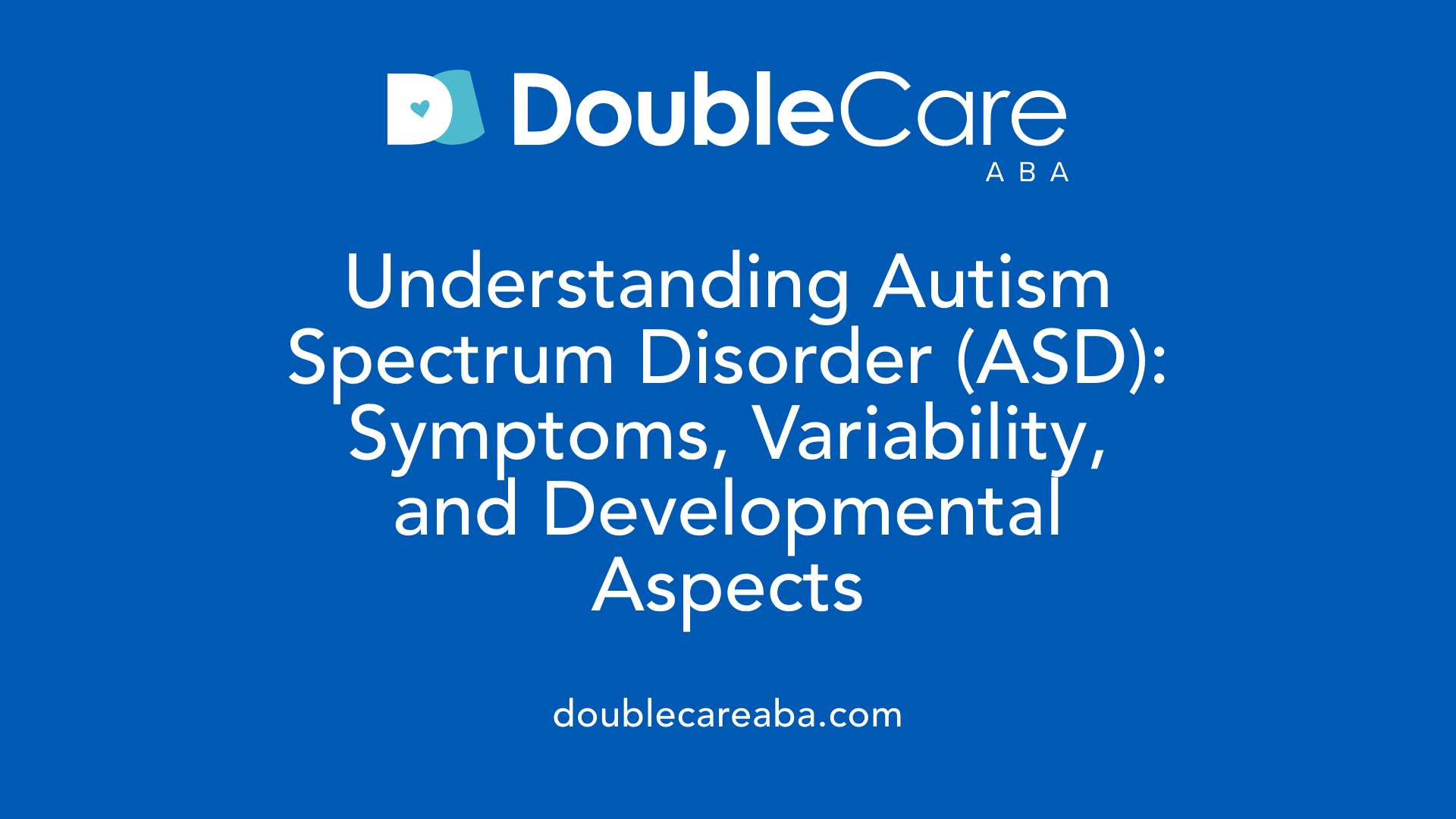
What is autism spectrum disorder?
Autism spectrum disorder (ASD) is a neurodevelopmental condition that affects how a person communicates and interacts socially. Individuals with ASD often experience persistent difficulties in social communication and interaction. Alongside these social challenges, they may exhibit restricted, repetitive behaviors, interests, or activities.
Neurodevelopmental aspects
ASD originates from differences in brain development that typically appear early in life. These neurodevelopmental differences influence a person’s ability to process social information and respond to their environment, contributing to the social and behavioral features seen in autism.
Core features and behaviors
The core characteristics of ASD include challenges with social communication—such as difficulties understanding social cues, maintaining conversations, or forming relationships—and repetitive behaviors or interests. These may range from repetitive movements to intense focus on specific topics or routines.
Variability in presentation
One hallmark of ASD is its wide variability. Symptoms can be mild or more pronounced, causing some autistic individuals to be diagnosed early, sometimes by age two, while others may remain undiagnosed into adulthood. This variability means some people may not initially recognize they are autistic, as their traits can be subtle or overlap with other conditions.
Challenges in Autism Diagnosis
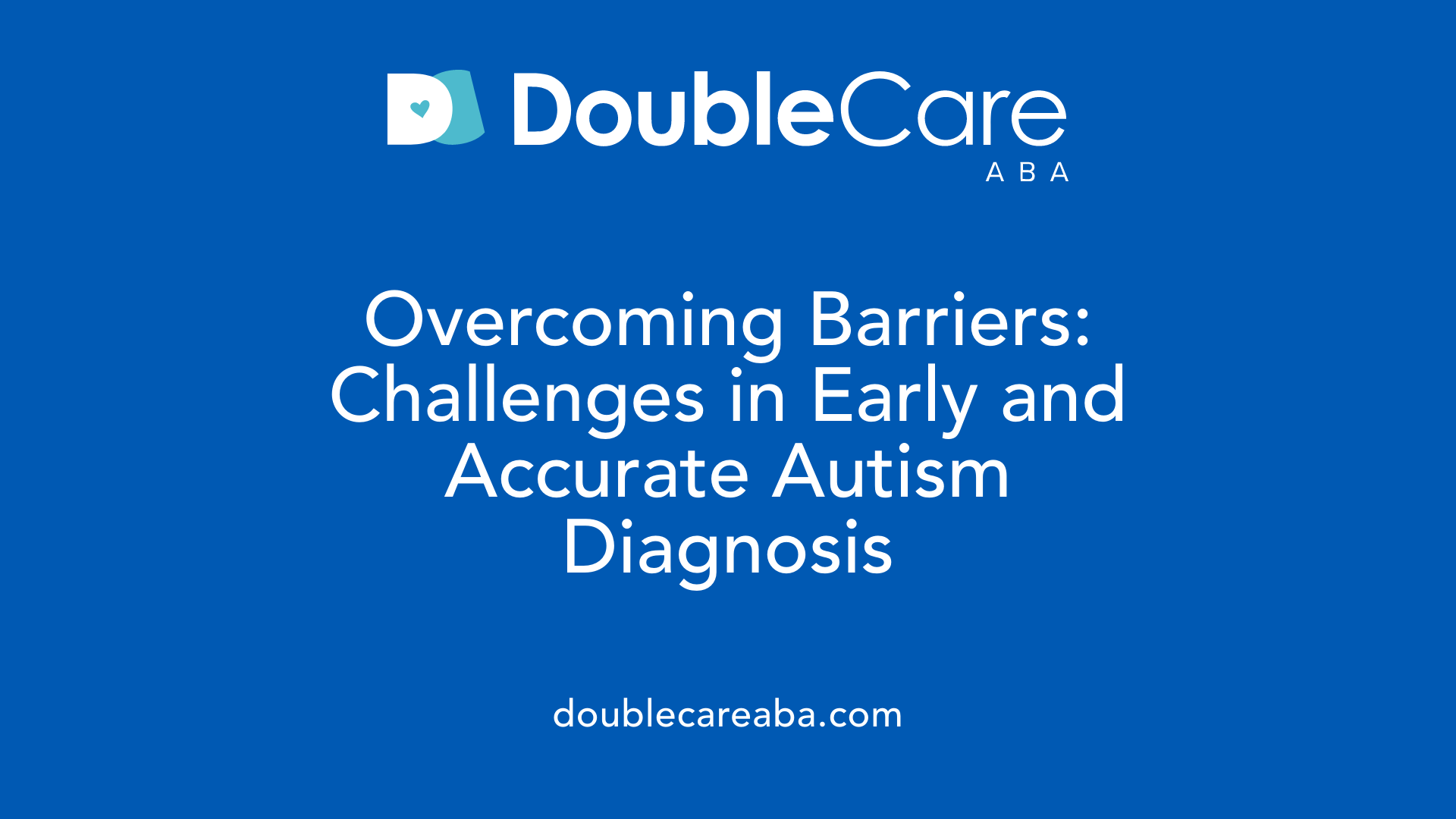
Why do many autistic people go undiagnosed until later in life?
Many autistic individuals remain undiagnosed until adulthood or never receive a diagnosis. This often happens due to the wide variability in how autism presents itself. Some individuals have milder symptoms or unique behaviors that do not fit typical stereotypes, complicating early identification.
Timing of Diagnosis
Autism spectrum disorder (ASD) can be diagnosed as early as age two, and early diagnosis is linked to improved quality of life and better outcomes. However, despite the possibility of early diagnosis, many people are diagnosed later or remain undiagnosed throughout life. This delay affects access to support and interventions that could greatly benefit individuals and families.
Gender and Cultural Biases
Autism is often underdiagnosed in girls, minorities, and adults. Historically, diagnostic criteria and research focused primarily on white males, leading to gender and cultural biases. Girls and individuals from diverse backgrounds may exhibit different traits or mask symptoms, contributing to missed or late diagnoses. These biases create significant barriers to timely and accurate diagnosis in these populations.
Overlap with Other Conditions
Autistic traits frequently overlap with other conditions such as attention deficit hyperactivity disorder (ADHD), depression, anorexia, and obsessive-compulsive behaviors. About 70% of autistic children have additional diagnoses, complicating the clinical picture. Misattributing autistic behaviors to other mental health or developmental issues can delay ASD diagnosis or lead to incomplete treatment plans.
Addressing these challenges requires increased awareness of autism’s diversity, culturally sensitive diagnostic approaches, and greater screening efforts beyond early childhood to reduce barriers for girls, minorities, and adults.
Importance of Early Autism Diagnosis
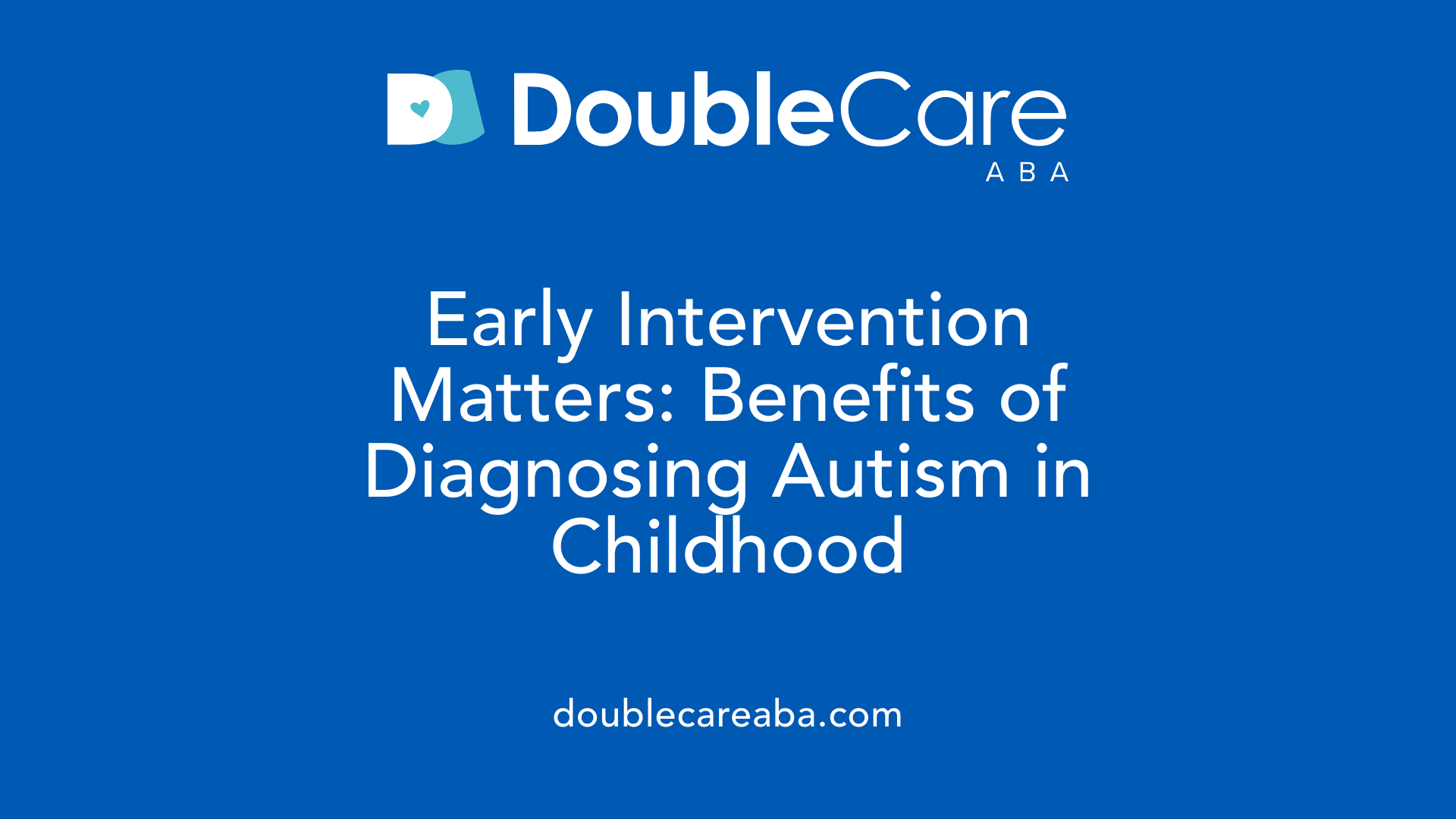
Benefits of Early Diagnosis
Autism spectrum disorder (ASD) can be reliably diagnosed as early as age two. Identifying autism early allows healthcare providers and families to start tailored interventions sooner. These early supports help children develop crucial social, communication, and behavioral skills during a sensitive developmental period.
Starting intervention early improves long-term developmental outcomes, enabling autistic children to gain better independence and social abilities. It also allows parents to better understand and support their child's needs, which can strengthen the parent-child bond.
Impact on Prognosis and Relationships
Recent research shows that early autism diagnosis positively impacts prognosis by enabling access to resources and therapies that enhance cognitive and emotional development. When families receive guidance early, they tend to have improved communication and stronger relationships with their autistic children.
Early diagnosis also reduces frustrations and misunderstandings within families and schools, facilitating a more supportive environment. This leads to better mental health outcomes for autistic individuals and their caregivers.
How does early diagnosis of autism affect outcomes?
Recent evidence indicates that an early autism diagnosis, often achievable by age two, improves prognosis by enabling earlier intervention and strengthens parent-child relationships, thereby enhancing quality of life and developmental outcomes.
Historical Evolution of Autism Diagnosis Criteria
How has autism diagnosis changed over time in diagnostic manuals?
Autism diagnosis has evolved significantly over the past decades, reflecting improved understanding of the condition's diversity. In earlier diagnostic frameworks, specifically the Diagnostic and Statistical Manual of Mental Disorders, Fourth Edition (DSM-IV), autism was divided into four distinct disorders. These included Autistic Disorder, Asperger's Disorder, Childhood Disintegrative Disorder, and Pervasive Developmental Disorder Not Otherwise Specified (PDD-NOS).
This categorization suggested separate, fixed conditions, which did not fully capture the variations and overlapping traits present in autistic individuals. Recognizing this, the DSM-5, published in 2013, made a major change by consolidating these categories into a single diagnosis called Autism Spectrum Disorder (ASD).
This new approach acknowledged autism as a spectrum with a wide range of manifestations. It allows for more flexible diagnosis that can consider the individual differences in communication challenges, social interaction, and behavior patterns rather than forcing fit into narrow subtypes.
The DSM-5's emphasis on spectrum diversity has improved awareness of how autism can look very different from person to person. It incorporates a broader understanding that includes both severe and milder presentations under one umbrella diagnosis, which has implications for better tailoring support and intervention strategies.
Autism Underdiagnosis in Girls and Minorities
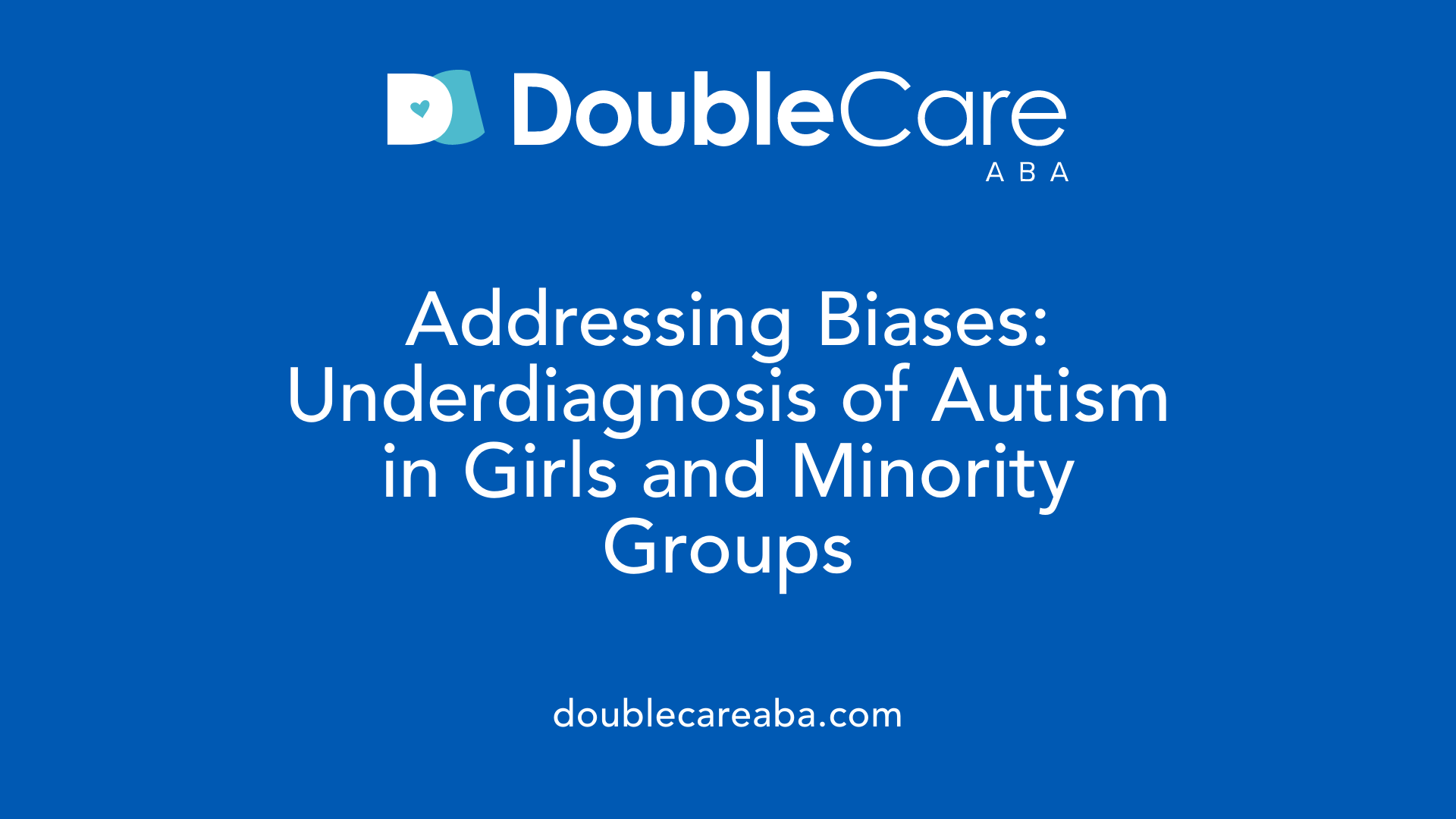
Why is autism often underdiagnosed in girls and minorities?
Autism is frequently underdiagnosed in girls and minority groups due to several intersecting factors. Historically, diagnostic criteria and clinical understanding of autism focused primarily on white male presentations. This focus created gender and cultural biases that made it harder to recognize autism traits expressed differently in girls and people from diverse racial or ethnic backgrounds.
Gender bias in diagnosis
Girls with autism often display less overt or different types of restricted and repetitive behaviors compared to boys, sometimes masking symptoms through social mimicry or coping strategies. These gender differences result in fewer referrals for assessment or misinterpretation of their traits as shyness or social anxiety.
Cultural factors affecting diagnosis
Cultural norms and expectations influence how autism symptoms manifest and are perceived by families and healthcare providers. Language barriers, variations in social behavior, and differing attitudes towards mental health can delay diagnosis in minority populations. Additionally, limited access to culturally competent healthcare exacerbates underdiagnosis.
Impact of underdiagnosis
Not identifying autism accurately in girls and minorities can lead to inadequate support, increased mental health challenges, and poorer outcomes overall. Without timely diagnosis, individuals miss early early intervention opportunities, which are linked to improved prognosis and stronger parent-child relationships.
| Factor | Description | Impact |
|---|---|---|
| Gender bias | Diagnostic criteria shaped by male characteristics; girls mask symptoms | Missed or delayed diagnosis |
| Cultural influences | Social norms and language differences affecting symptom recognition | Healthcare disparities; delays in diagnosis |
| Consequences of underdiagnosis | Limited support and increased psychiatric risks | Poorer outcomes; lost intervention benefits |
Co-occurring Conditions with Autism
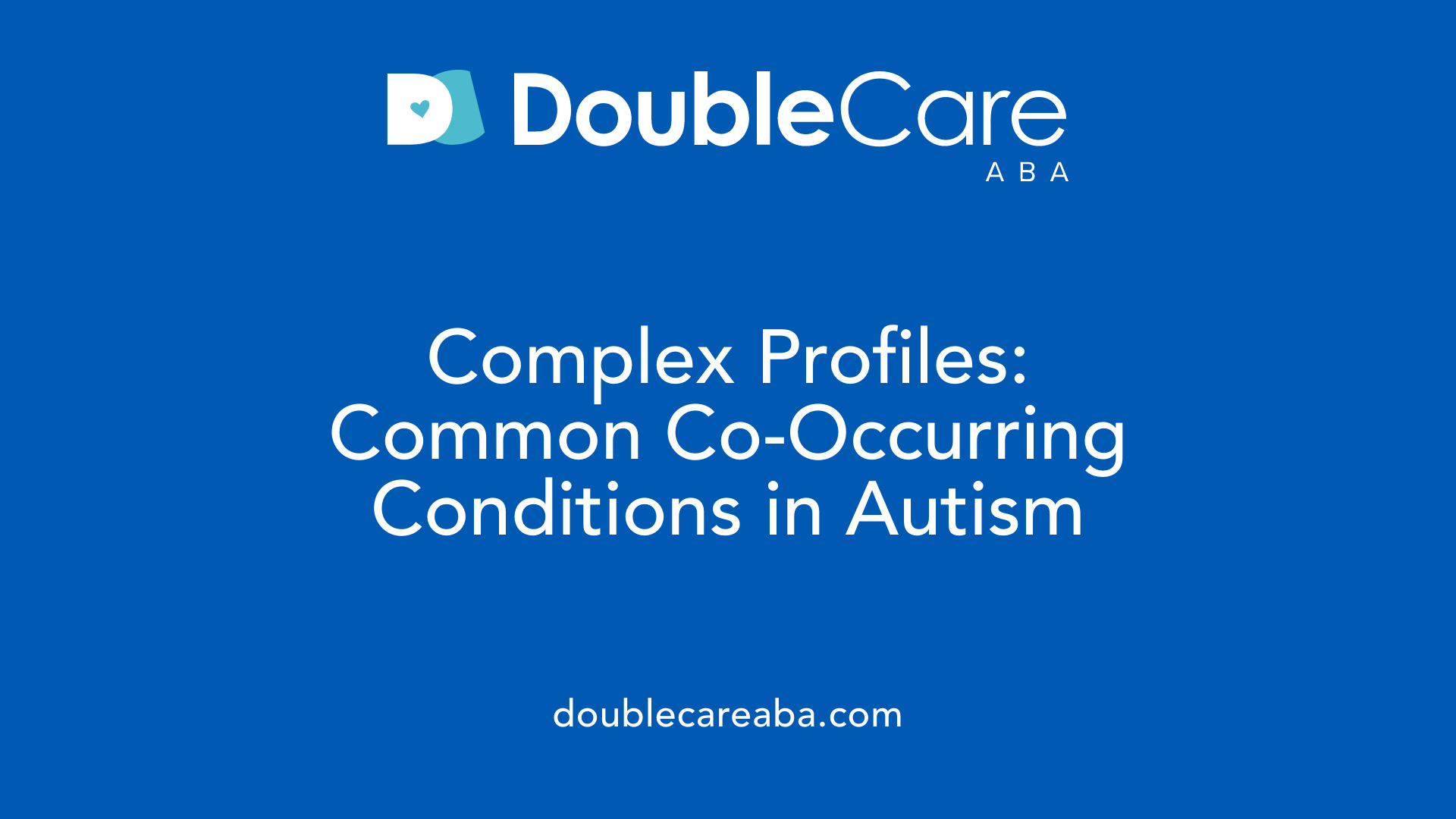
What other conditions commonly occur with autism?
Autism spectrum disorder (ASD) often features overlaps with several other health conditions. Research shows that about 70% of autistic children have additional diagnoses, making co-occurring conditions a common and important aspect of autism care.
Overlap with ADHD, depression, anorexia
Common co-occurring conditions include attention-deficit/hyperactivity disorder (ADHD), depression, anorexia nervosa, and obsessive behaviors. These overlaps mean that symptoms can sometimes blend together, complicating clear diagnosis. For example, impulsivity and attention challenges seen in ADHD may overlap with social communication difficulties in autism.
Clinical implications
The frequent presence of multiple diagnoses necessitates comprehensive and holistic assessment approaches. Treating autism alone without recognizing co-occurring conditions may leave some challenges unaddressed. Clinicians need to evaluate each individual carefully to create treatment plans that consider all conditions present, aiming for better overall outcomes.
Risks Associated with Undiagnosed Autism
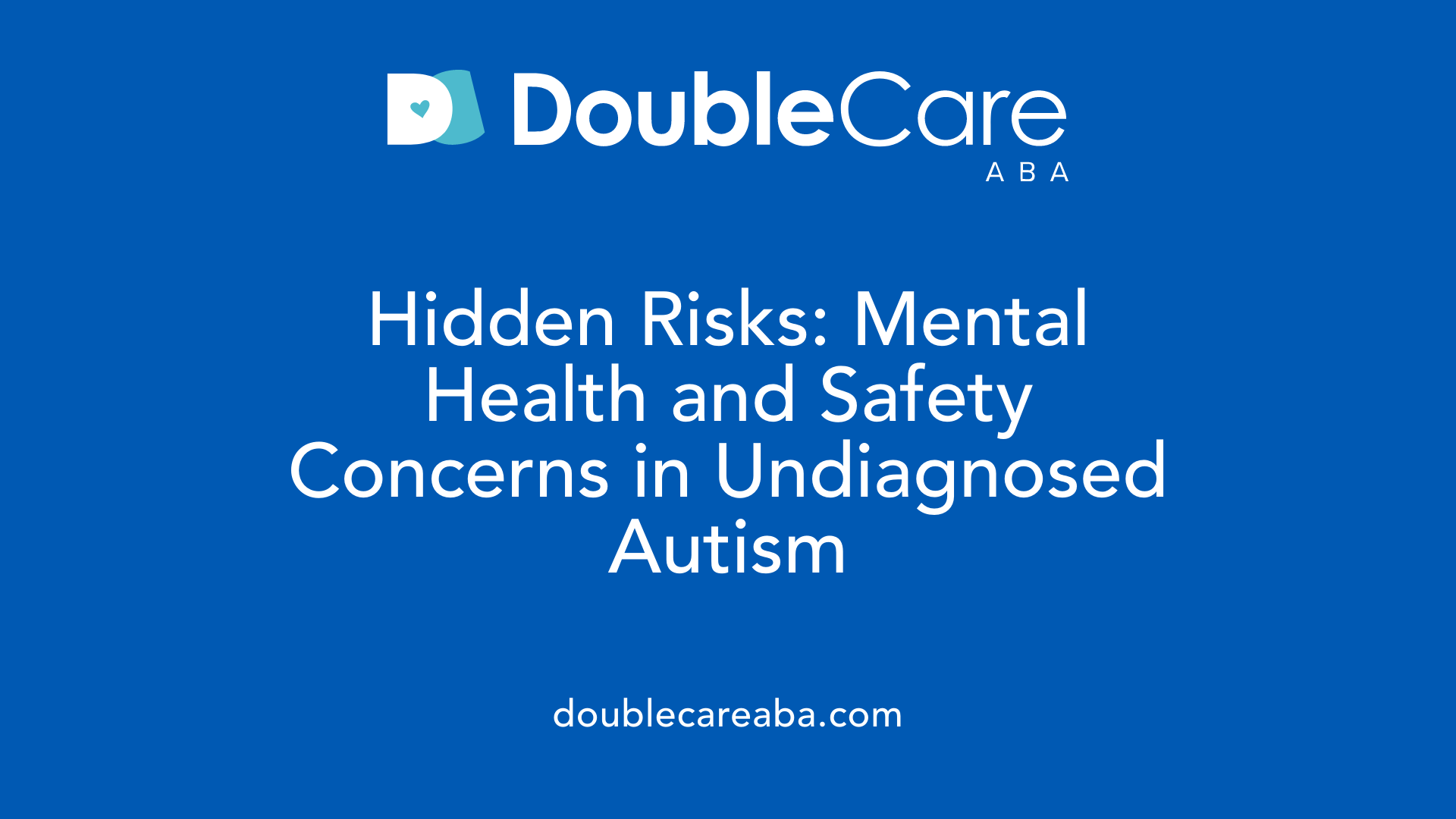
What risks are increased among undiagnosed autistic individuals?
Research reveals that individuals with undiagnosed autism spectrum disorder face significantly heightened risks of suicidality, including suicide attempts. This increased vulnerability is often tied to factors such as social isolation, lack of adequate support systems, and the psychological burden of unrecognized challenges associated with autism.
Psychological distress in undiagnosed autism
Without a formal diagnosis, many autistic individuals struggle to understand their experiences and behaviors, which can lead to increased feelings of confusion, anxiety, and depression. The absence of tailored support means these psychological stresses often go unaddressed, exacerbating mental health difficulties.
Need for appropriate support
Appropriate recognition and diagnosis of autism enable access to specialized interventions and support that directly address social communication challenges and co-occurring conditions. Early and accurate identification helps improve parent-child relationships and overall prognosis, reducing the risk factors that contribute to suicidality and psychological distress in autistic individuals.
Digital Media Use and Autism
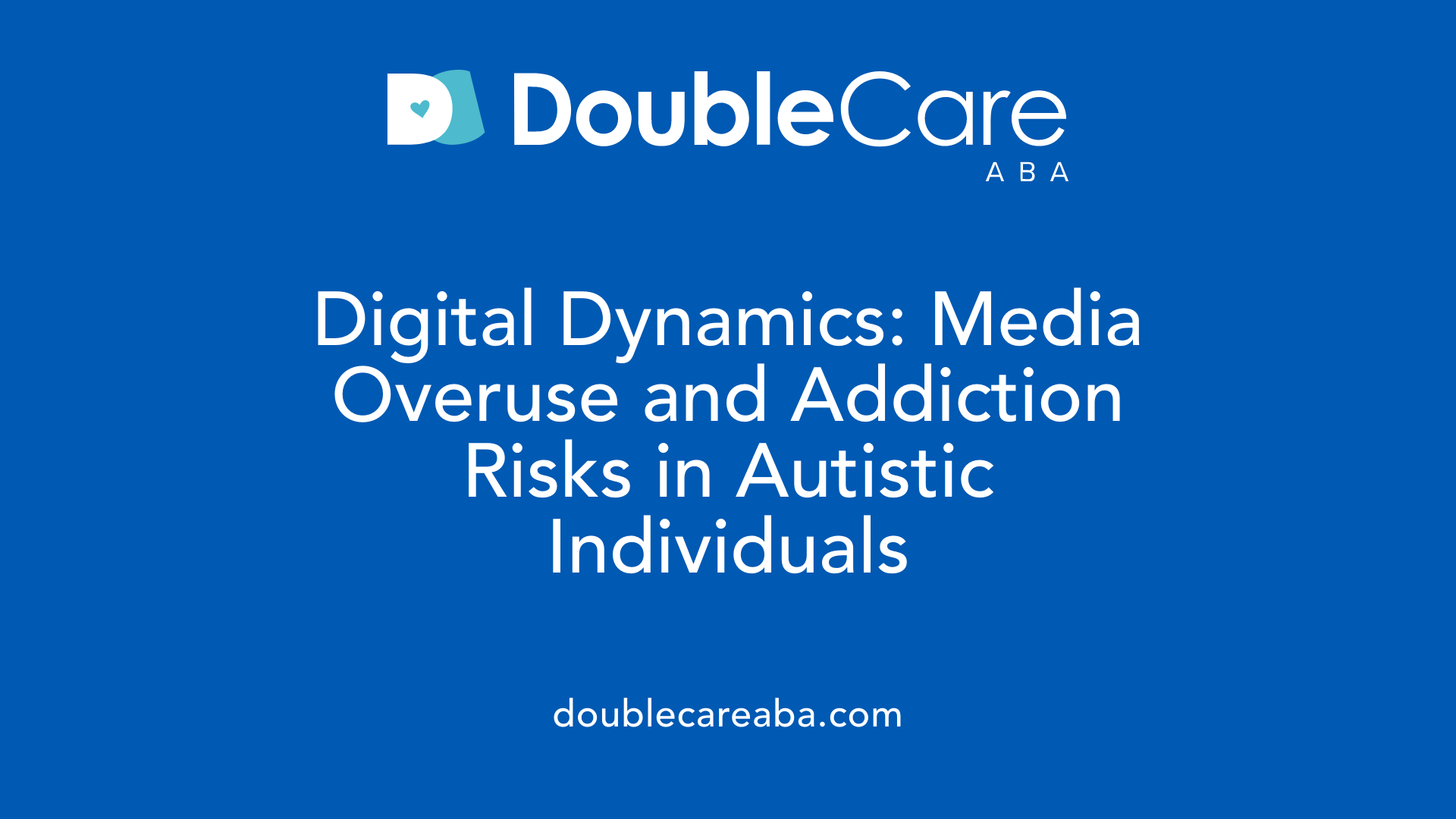
Why are autistic individuals more prone to digital media overuse?
Autistic individuals frequently exhibit sensory-seeking behaviors, which can lead them to use digital media extensively. Activities like internet browsing and video gaming provide controlled sensory input and a refuge from the complexities of social interaction, which they often find challenging.
Sensory-seeking behavior
People on the autism spectrum may seek specific sensory experiences that help regulate their sensory system. Digital media, with its vivid visuals, sounds, and interactive features, can fulfill this need by offering predictable and manageable sensory stimulation.
Digital media overuse and addiction
The intense engagement with digital platforms can turn into overuse or addiction for some autistic users. This overuse stems from the comforting sensory feedback and the social ease that online environments may provide compared to face-to-face interactions.
Gaming disorder risks
Gaming disorder is a particular risk for autistic individuals. The structured, rule-based nature of games aligns with their preference for routine and predictability. However, excessive gaming can interfere with daily functioning and overall well-being.
Impact of persuasive digital design
Online platforms employ responsive and rewarding cues deliberately crafted to capture attention and sustain engagement. These persuasive design elements have a heightened effect on autistic users due to their sensory preferences, increasing the likelihood of prolonged usage and potential addiction.
In summary, the combination of autistic sensory needs, social challenges, and the enticing design of digital media platforms contributes to a greater susceptibility to digital media overuse and behavioral addiction among autistic individuals. Understanding these factors is crucial for developing supportive interventions and healthy media habits.
Transition to College and Digital Media Challenges for Autistic Students

Why does digital media use increase among autistic students during college?
The move to college often means autistic students face reduced daily support and increased social challenges. These changes can lead them to spend more time engaged with digital media, such as gaming and internet activities. The digital environment offers a controlled, sensory-friendly space where social demands are lower, making it attractive for autistic individuals coping with new pressures.
How do social and academic challenges affect autistic college students?
Social interactions can be particularly difficult for autistic students in unfamiliar college settings, often resulting in feelings of isolation. Academically, the transition may heighten stress due to independent learning expectations and less structured guidance. Together, these factors can push students towards digital platforms for comfort and distraction.
What are the potential negative impacts of increased digital media use on autistic students' wellbeing?
While digital media can provide relief, excessive use might lead to behavioral addiction, worsening social withdrawal. This overuse can harm mental health, contribute to poorer sleep, and interfere with academic performance. Moreover, persuasive digital design features intentionally stimulate sensory-seeking behaviors common in autism, increasing the risk of problematic use.
Addressing these challenges requires targeted support systems that recognize the unique needs of autistic students, promoting healthier social engagement and balanced media habits.
Overview of Applied Behavior Analysis (ABA) Therapy
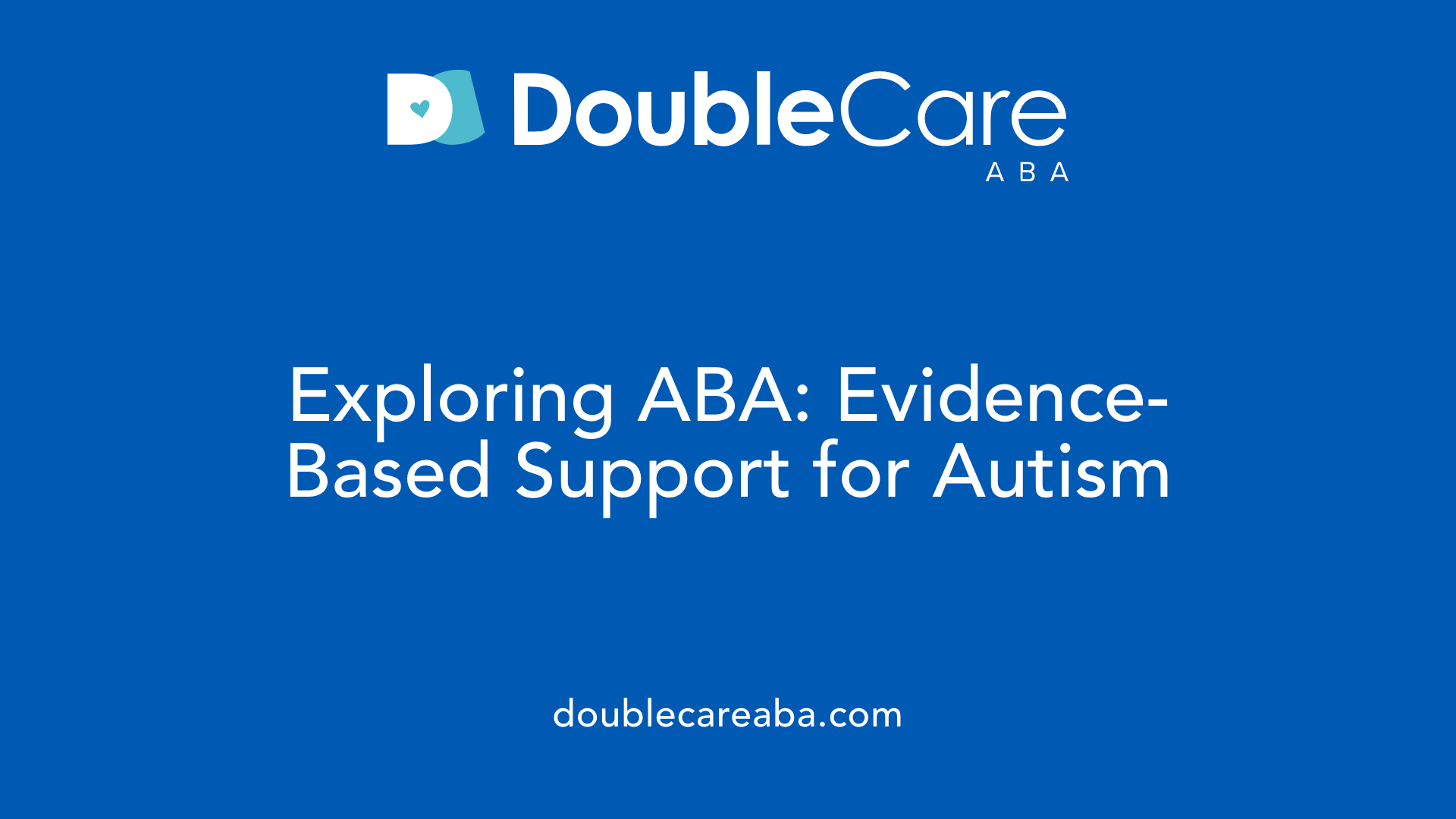
What is Applied Behavior Analysis (ABA) therapy, and how does it help individuals with autism?
Applied Behavior Analysis (ABA) therapy is a scientifically supported treatment designed to assist individuals with autism spectrum disorder (ASD). It applies principles of operant conditioning, particularly positive reinforcement, to promote beneficial behaviors while reducing harmful or challenging ones. Through individualized, data-driven programs, ABA therapy targets improvements in communication, social interaction, attention, and academic skills.
Definition of ABA therapy
ABA therapy focuses on analyzing and modifying behaviors by systematically applying behavioral principles. It breaks down complex skills into smaller, achievable tasks, enabling step-by-step learning for individuals on the spectrum.
Behavioral principles
Core to ABA are concepts such as positive reinforcement, where desired behaviors are rewarded to increase their frequency. Negative behaviors are managed through strategies like extinction or differential reinforcement, aiming to replace them with more appropriate alternatives.
Focus on communication and social skills improvement
ABA therapy especially emphasizes developing communication and social interaction skills, areas where autistic individuals often face persistent challenges. Techniques include modeling, prompting, and role-playing to encourage effective social engagement.
Use of positive reinforcement
Positive reinforcement is a central tool in ABA, motivating individuals by providing rewards such as praise, tokens, or preferred activities immediately following target behaviors. This helps strengthen useful behaviors and fosters greater independence and confidence.
ABA therapy is most effective when introduced early, aligning with the evidence that early diagnosis improves prognosis and parent-child relationships. Customization of therapy to the individual's unique strengths and challenges ensures meaningful progress in everyday functioning.
Who Provides ABA Therapy and Their Qualifications

Roles of BCBAs and RBTs
Applied Behavior Analysis (ABA) therapy is primarily provided by Board Certified Behavior Analysts (BCBAs) and Registered Behavior Technicians (RBTs). BCBAs hold graduate-level degrees and are trained to design, implement, and oversee individualized behavior intervention plans. RBTs deliver the day-to-day therapy directly to clients but operate under the supervision of a BCBA.
Certification and Training Requirements
BCBAs must complete an accredited graduate program in behavior analysis or related fields, accumulate supervised practical experience, and pass a competency exam administered by the Behavior Analyst Certification Board (BACB). RBTs, on the other hand, need to complete a 40-hour training course, pass a certification exam, and work under the ongoing oversight of a BCBA.
State Licensure and Supervision
Beyond national certification, many states require licensure for practicing behavior analysts, which may involve additional criteria such as state exams or fees. Supervision is a critical component, with BCBAs responsible for regularly monitoring RBTs and ensuring therapy adheres to professional and ethical standards.
Together, this layered structure of qualifications and oversight helps maintain high-quality ABA therapy services tailored to individuals on the autism spectrum.
Structure and Customization of ABA Therapy Programs

How is an ABA therapy program typically structured and customized for an individual?
ABA (Applied Behavior Analysis) therapy programs are thoughtfully crafted to meet the unique needs of each individual. The process begins with personalized assessments that evaluate strengths, challenges, and specific developmental goals. These assessments provide a foundation to identify appropriate areas of focus and establish clear objectives.
Treatment plans are then tailored to the individual, incorporating measurable and achievable goals. These goals are data-driven and often include techniques like positive reinforcement, which motivates desired behaviors, and task analysis, which breaks down complex skills into manageable steps.
Customization goes beyond clinical goals; therapists consider the individual's preferences and daily environment to ensure the therapy resonates personally and practically. This personalized approach enhances engagement and effectiveness.
An essential component of ABA therapy customization involves a collaborative approach with caregivers. Families and other caregivers actively participate in goal setting, intervention strategies, and ongoing feedback. Their involvement enables consistent support throughout various settings and fosters a supportive network that reinforces the therapeutic progress.
Through these methods, ABA therapy programs support individuals in achieving meaningful improvements aligned with their unique profiles and life contexts, aiming to improve their overall quality of life.
Common Techniques Used in ABA Therapy to Encourage Behavior Change
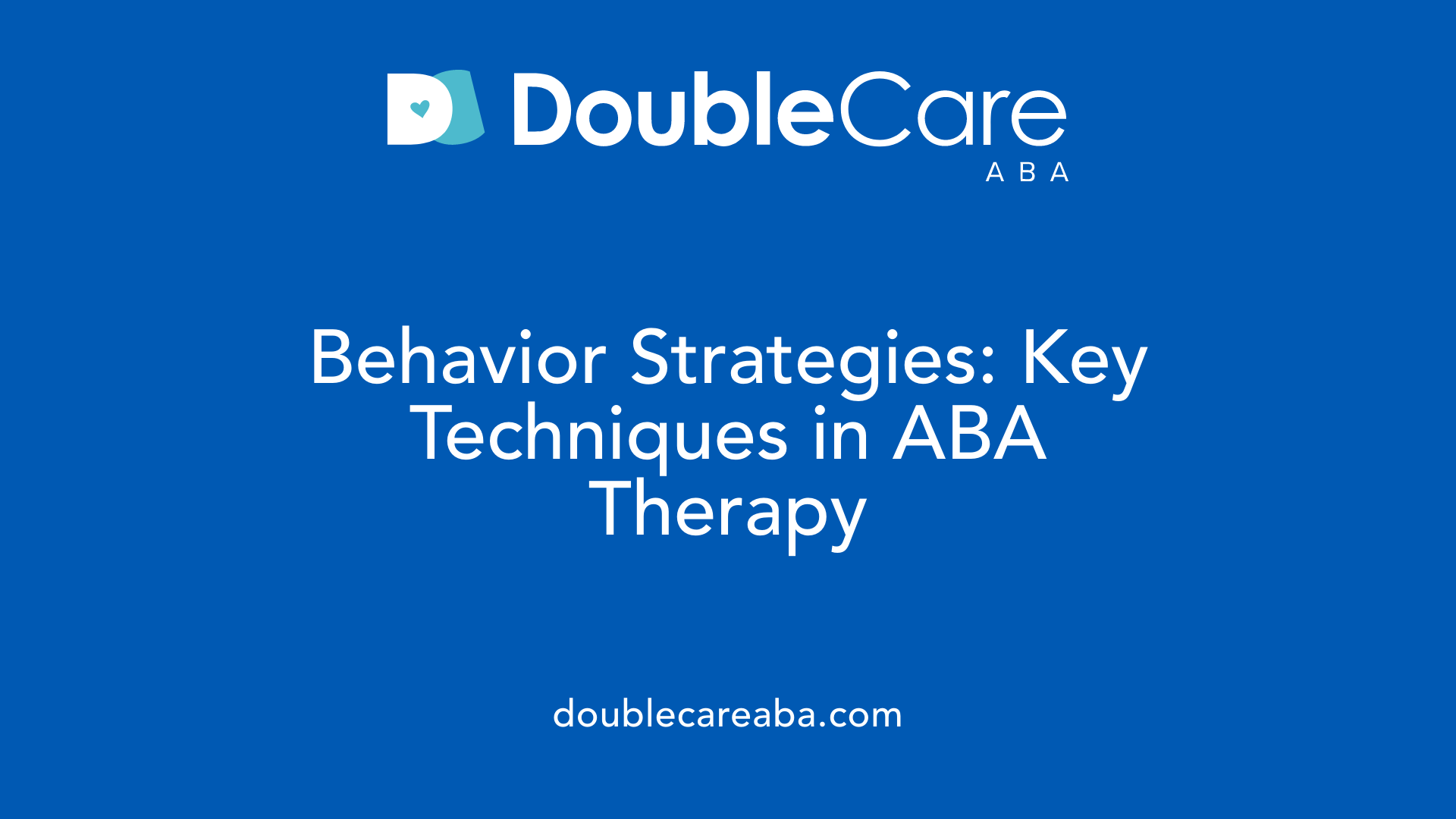
What are common techniques used in ABA therapy to encourage behavior change?
Applied Behavior Analysis (ABA) therapy uses several effective techniques to foster positive behavior change, especially in individuals on the autism spectrum. These methods focus on encouraging desired behaviors and reducing challenging ones through structured support and reinforcement.
Positive Reinforcement is one of the most fundamental ABA strategies. It involves rewarding a person after they display a target behavior, thereby increasing the likelihood of that behavior recurring. Rewards can be praise, tokens, or preferred activities.
Prompting assists individuals by providing cues or guidance to perform a behavior correctly. Prompts may be verbal, gestural, or physical, and they are gradually faded as independence grows.
Shaping is a technique used to teach new or complex behaviors by reinforcing successive approximations toward the target behavior. For instance, if a child is learning to speak, their attempts at sounds may be rewarded initially, gradually focusing on clearer words.
Task Analysis breaks down complicated tasks into smaller, manageable steps. This makes learning more approachable and helps in teaching each component sequentially until mastery is achieved.
Data Collection is essential throughout therapy. By systematically recording behavior occurrences and responses to interventions, therapists can analyze progress and modify strategies to optimize outcomes.
Together, these techniques create a comprehensive approach that supports behavior change through structured learning and positive experiences, contributing significantly to individual growth and skill acquisition.
Duration and Frequency of ABA Therapy Sessions

What is the typical duration and frequency of ABA therapy sessions for individuals with autism?
Applied Behavior Analysis (ABA) therapy is tailored to fit the individual needs of people on the autism spectrum, resulting in a wide range of session durations and frequencies. Typically, ABA therapy involves anywhere from 10 to 40 hours per week, with the exact amount depending on age, severity of symptoms, and specific developmental goals.
Sessions themselves generally last between 1 to 8 hours daily. Younger children often have shorter sessions to accommodate attention spans, while older individuals or those requiring intensive intervention might engage in longer sessions. The flexibility in duration allows therapists to adjust based on progress and tolerance.
Long-term Therapy Considerations
ABA therapy is not a short-term intervention; it is usually delivered over months or even years. Sustained engagement is linked to improved developmental outcomes and better social communication skills. Continuous monitoring and adaptation of therapy ensures that sessions remain effective and relevant to the individual's evolving needs.
Progress Monitoring
Frequent assessments are crucial for tracking improvements and deciding whether to increase, maintain, or reduce therapy intensity. These evaluations help to optimize the session length and weekly hours to best support the individual's growth and quality of life.
Together, these factors create a dynamic therapy schedule aimed at maximizing developmental gains while accommodating personal requirements and progress milestones.
Scientific Evidence Supporting ABA Therapy Effectiveness

What evidence supports the effectiveness of ABA therapy for autism?
Applied Behavior Analysis (ABA) therapy is widely recognized for its effectiveness in supporting individuals on the autism spectrum. Numerous studies show that ABA interventions lead to significant improvements in social skills and language development, which are often areas of challenge for autistic individuals.
Study findings on social and language improvements
Research indicates that consistent ABA therapy can help children develop better communication abilities, including expressive and receptive language skills. Social engagement and emotional regulation also improve, contributing to more positive interactions and relationships.
Meta-analysis results
Meta-analyses, which aggregate data from multiple studies, have found large effect sizes for ABA therapy’s impact. These comprehensive reviews confirm that ABA is a robust evidence-based treatment, reliably enhancing core autism-related challenges.
Impact on adaptive skills and IQ
In addition to social and communication gains, ABA therapy has been shown to improve adaptive behaviors — daily living skills that increase independence. Some studies also report IQ score increases after sustained ABA treatment, emphasizing its influence on overall cognitive functioning.
Together, these findings underscore ABA therapy as an empirically supported approach, providing meaningful benefits in multiple developmental domains for people with autism.
Criticisms and Limitations of ABA Therapy

Concerns about therapy intensity and emotional impact
Applied Behavior Analysis (ABA) therapy is often intensive, involving numerous hours of structured intervention weekly. Critics argue that this intensity can become emotionally taxing for autistic individuals. The process may inadvertently encourage masking behaviors, where individuals suppress their authentic selves to meet therapy goals. This emotional strain raises questions about the long-term psychological effects of ABA therapy.
Ethical considerations
Ethical concerns surrounding ABA largely focus on the methods used to reinforce desired behaviors. Some individuals feel that these reinforcement techniques can seem coercive, prioritizing compliance over personal autonomy. There is a growing call within the autism community to ensure that ABA is implemented with sensitivity, respecting the individual's preferences and boundaries.
Focus on conformity versus individual expression
Another main criticism is ABA's focus on encouraging behaviors that conform to societal norms rather than fostering individual strengths and self-expression. Autism is a neurodevelopmental difference, and some argue that therapy should celebrate diversity instead of enforcing standard behaviors. Emphasizing conformity risks diminishing the unique experiences and identities of autistic people.
Understanding these concerns is crucial for professionals and families considering ABA therapy. It highlights the importance of tailoring interventions to support emotional well-being and autonomy, rather than solely aiming for behavioral change.
The Role of ABA Therapy in Supporting Quality of Life

Balancing Skills Development and Personal Preferences
Applied Behavior Analysis (ABA) therapy focuses on teaching valuable skills and behaviors while respecting the unique preferences and interests of autistic individuals. This balance helps promote engagement and motivation by incorporating personal interests into therapy goals, making learning more enjoyable and meaningful.
Supporting Independence
One of the central aims of ABA therapy is to enhance independence in daily life. Therapists work with individuals to build communication, social, and self-care skills, enabling them to navigate their environments with greater confidence and autonomy. This empowerment contributes to improved quality of life by fostering self-reliance.
Therapy as Part of Holistic Care
ABA therapy is most effective when integrated into a holistic approach that addresses sensory needs, mental health, and social challenges. Considering that many autistic individuals experience sensory seeking behaviors and social difficulties, comprehensive care that combines ABA therapy with other supports can help regulate sensory input, reduce stress, and improve overall well-being.
Navigating Public Perceptions of Autism and Therapy
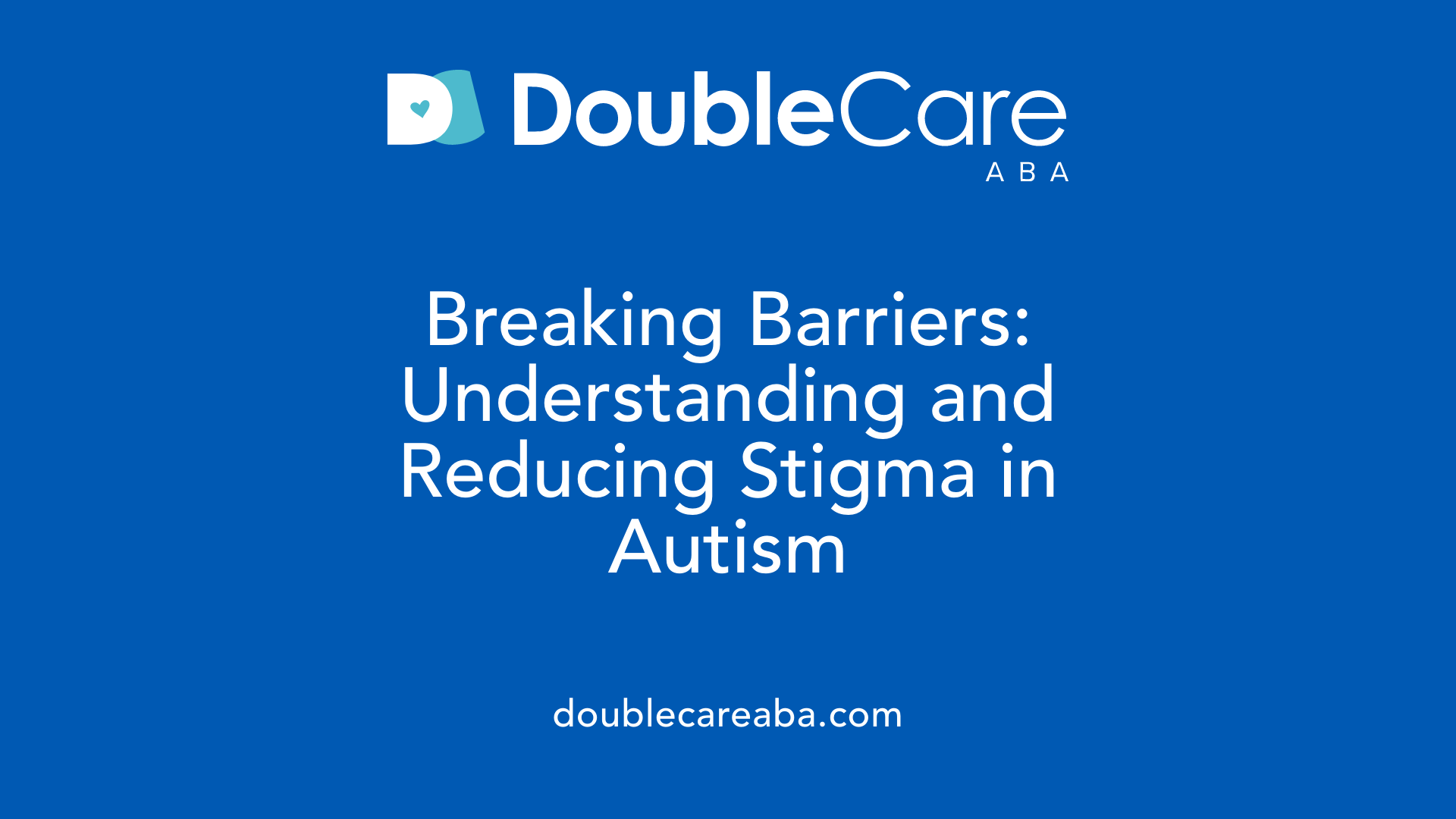
Stigma and Misconceptions
Autism spectrum disorder (ASD) continues to face various stigmas and misconceptions despite increased awareness. Many people still misunderstand autism due to its diverse presentations, which vary widely between individuals. Misconceptions often portray autistic people as having a narrow set of traits or abilities, failing to recognize the broad spectrum and the unique characteristics each person may have. Additionally, outdated notions about autism being a rare or clearly defined condition contribute to misunderstanding and can delay diagnosis and support.
Media Portrayal of Autism
Media representation often shapes public perception but tends to oversimplify or stereotype autism. Historically, depictions have focused heavily on white male individuals exhibiting overt symptoms, neglecting girls, minorities, and adults, who are frequently underdiagnosed. Such portrayals may skew awareness towards specific traits and stories, potentially reinforcing inaccurate ideas about what autism “looks like.” Positive media depictions emphasizing diverse experiences can help improve understanding and reduce stigma.
Impact on Individuals and Families
Misunderstandings and societal stigma can profoundly affect both autistic individuals and their families. Stigma may discourage people from seeking diagnoses or support, particularly for those whose symptoms differ from common assumptions. Families may face social isolation, judgment, or lack of resources, making it harder to navigate therapy and interventions. Early diagnosis and appropriate support are vital in improving life quality and relationships, but stigma remains a barrier to accessing these benefits.
By fostering a nuanced understanding of autism and promoting inclusive, varied portrayals, society can reduce stigma's harmful effects and better support autistic individuals and their families.
Speculation Around Keir Gilchrist and Autism: What Is Known?
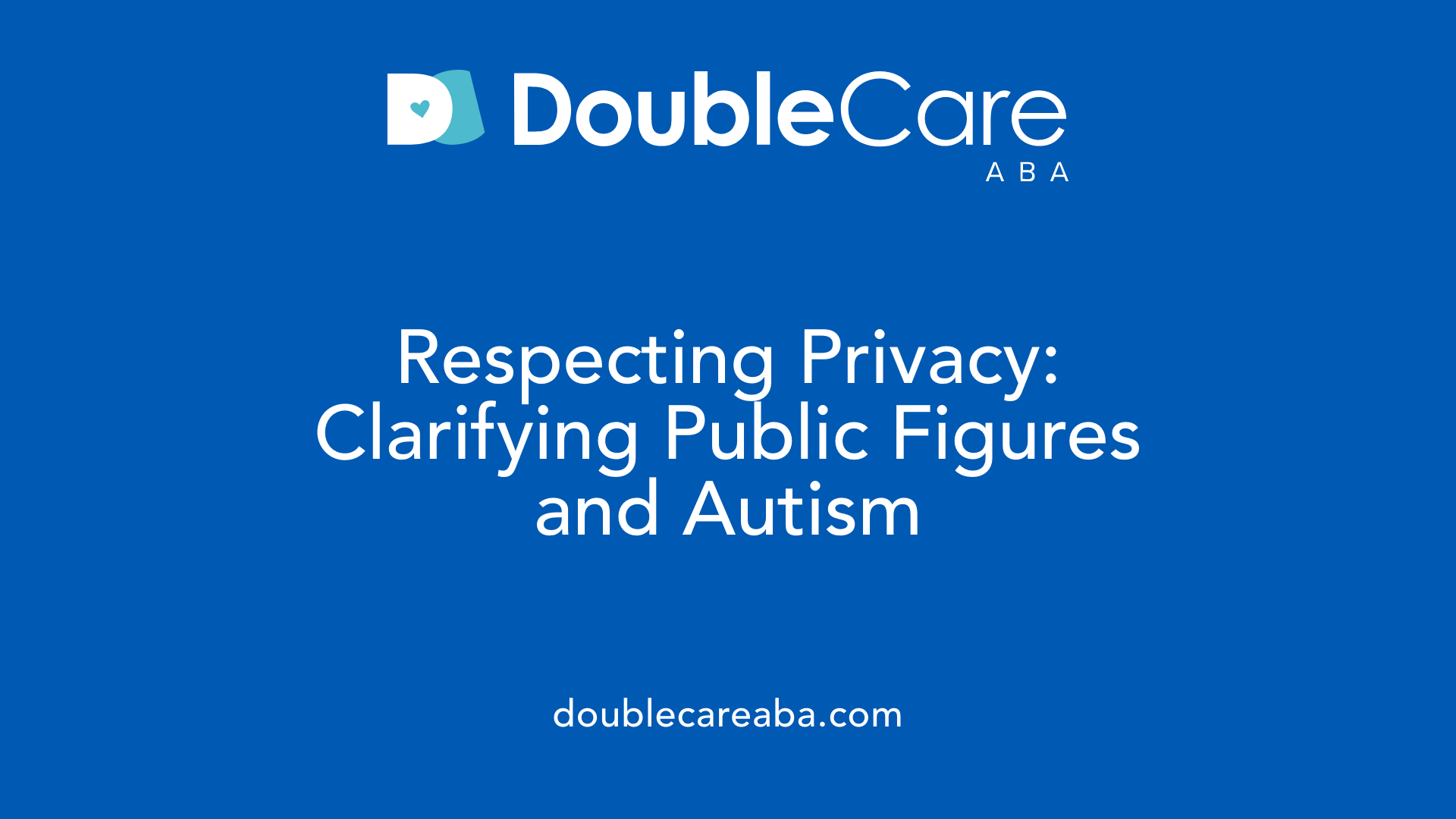
No confirmed diagnosis
As of now, there is no publicly confirmed diagnosis regarding Keir Gilchrist and autism. Celebrities often attract speculation about their health or personal lives, but without direct confirmation from the individual or their representatives, such details remain private.
Reasons for public interest
Public interest in whether Keir Gilchrist might be autistic stems from several factors. Characters he has portrayed sometimes display traits that resonate with autistic experiences, which leads viewers to speculate. Additionally, increased societal awareness about autism and its spectrum variability encourages fans to consider these aspects. This curiosity is partly because autism's broad range means individuals express it uniquely, sometimes subtly.
Importance of respecting privacy
While speculation can arise from a place of empathy or connection, it is vital to respect Keir Gilchrist's privacy. Autism diagnoses are personal medical information, and sharing or assuming such details without consent can foster stigma or misunderstanding. Recognizing that autism presents diversely, it's essential to avoid assumptions based on appearances or roles. Prioritizing respect helps maintain dignity for all individuals, including public figures like Gilchrist.
Why Public Curiosity Surrounds Celebrity Neurodiversity
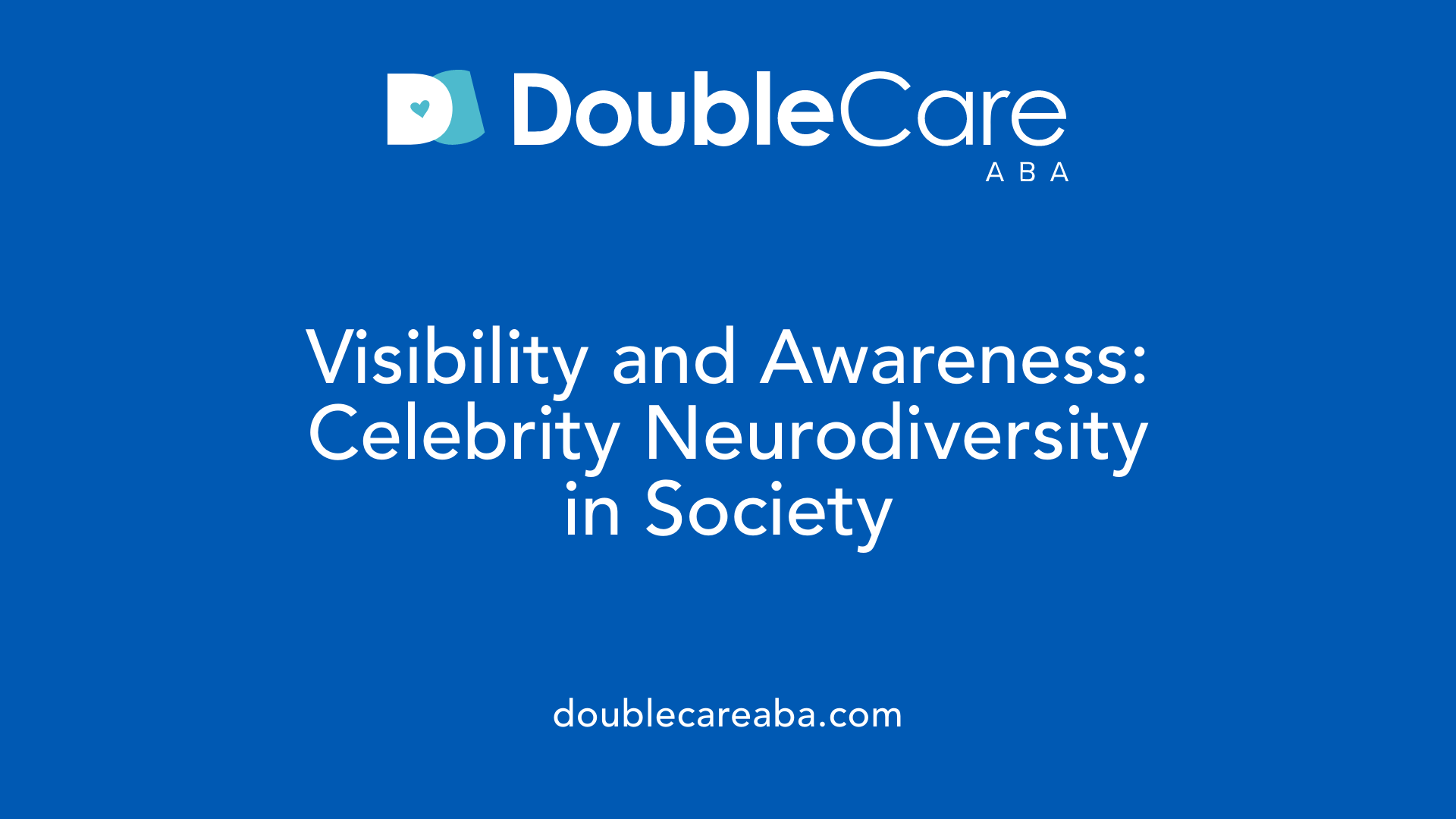
Increased awareness of autism
In recent years, there has been a notable rise in public understanding and awareness of autism spectrum disorder (ASD). This is partly due to expanded diagnostic criteria and universal screening recommendations that have brought autism more into the spotlight. As more people become familiar with the diverse presentations of autism—ranging from social communication difficulties to repetitive behaviors—the public naturally becomes interested in how autism manifests in all walks of life, including among celebrities.
Representation and visibility
Celebrities who openly discuss their neurodiversity bring much-needed representation to the autism community. Since autism was historically underdiagnosed in groups such as girls, minorities, and adults, having well-known individuals share their experiences helps increase visibility and break down stereotypes. This representation often encourages early diagnosis and acceptance, highlighting the wide variability in how autism presents and emphasizing that it exists across all demographics.
Challenges of public speculation
Despite its positive impact, the public’s curiosity can sometimes lead to speculation and misunderstandings about a celebrity's neurodiversity. Not all autistic traits are immediately visible or may overlap with other conditions like ADHD or anxiety. Furthermore, the intense interest can sometimes invade privacy or fuel stigma. This speculation underscores the complexity of autism’s diverse presentations and the importance of respecting individual experiences rather than making assumptions based on appearances or behaviors alone.
Understanding Autism Beyond Diagnostic Labels
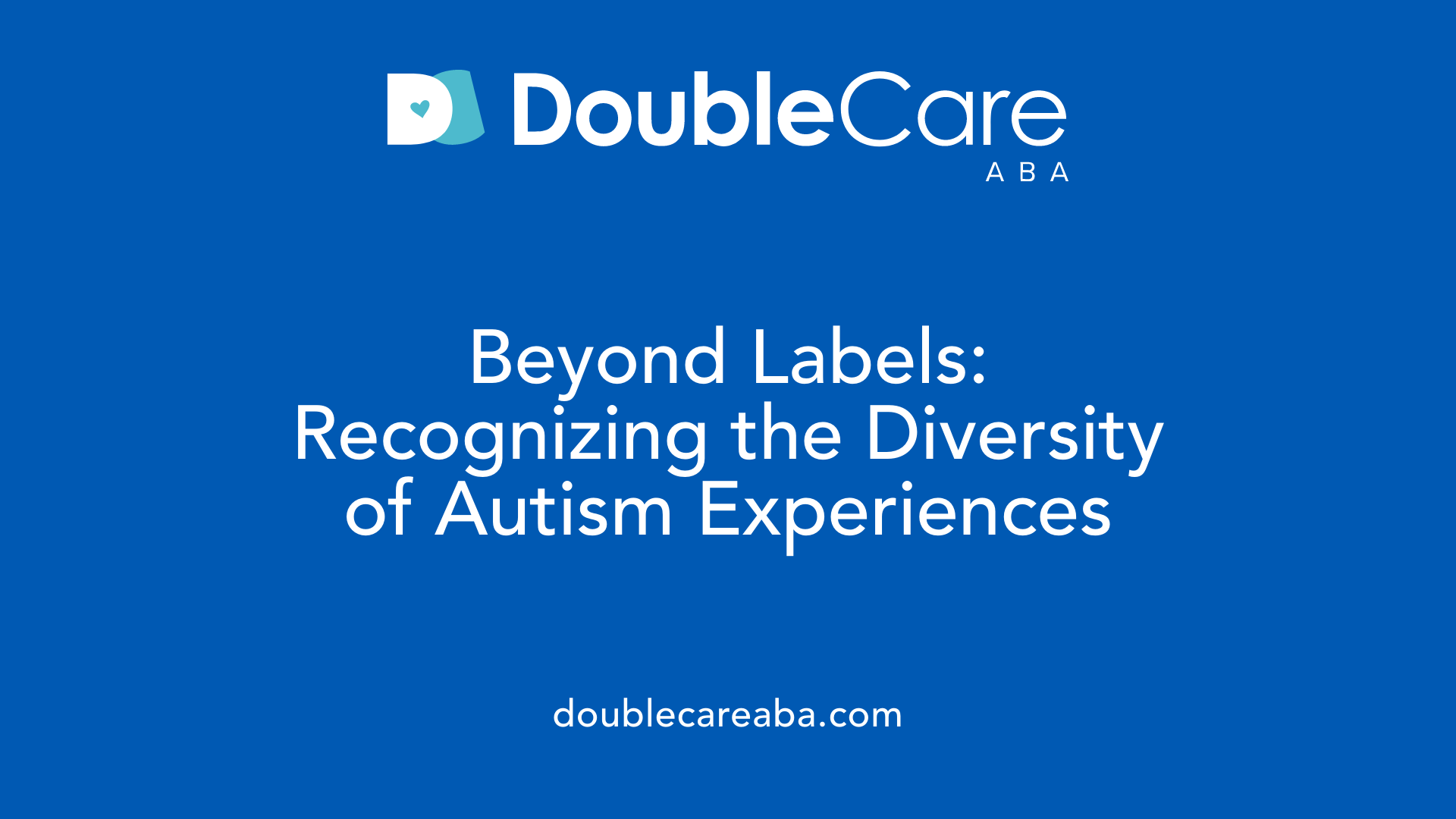
Individual variability
Autism spectrum disorder (ASD) is characterized by a broad range of behaviors and experiences, making every autistic person unique. While some may face significant challenges in social communication and interaction, others might exhibit milder traits or develop coping mechanisms that allow them to navigate social situations effectively. This variability means many individuals remain undiagnosed until later in life, or sometimes never realize they are autistic.
Strengths and challenges
Autistic individuals often experience a complex mix of strengths and difficulties. Alongside difficulties such as repetitive behaviors and social challenges, many show intense focus on special interests, strong attention to detail, and creative problem-solving abilities. However, overlapping conditions like ADHD and anxiety can complicate their experiences, and sensory-seeking behaviors may lead to increased engagement with digital media, sometimes resulting in overuse or addiction.
Moving away from stereotypes
Traditional views of autism centered on young white males, which contributed to underdiagnosis in girls, minorities, and adults. Modern understanding recognizes ASD as a neurodevelopmental spectrum that reflects diverse experiences beyond outdated stereotypes. This shift helps improve recognition, diagnosis, and support for all autistic individuals, tailoring approaches to their distinct profiles rather than fitting them into narrow categories.
Supporting Autistic Individuals in Education and Work

What accommodations and supports help autistic individuals succeed in education and work?
Autistic individuals benefit greatly from tailored accommodations that address their unique sensory and social needs. Common supports include:
- Structured routines to reduce uncertainty
- Sensory-friendly environments, such as quiet workspaces or headphones to manage noise
- Clear, direct communication from educators and employers
- Flexible scheduling to accommodate fluctuating energy levels or anxiety
- Use of assistive technologies for organization and task management
These accommodations can help reduce stress and improve focus, enabling autistic individuals to thrive.
What transition challenges do autistic individuals face?
Transition periods, such as moving from high school to college or entering the workforce, present notable challenges. Reduced support, increased social expectations, and new environments can lead some autistic individuals to withdraw. This often results in increased reliance on digital media and gaming as coping mechanisms, which may negatively impact well-being and academic or job performance.
How do therapies like ABA support autistic individuals?
Applied Behavior Analysis (ABA) therapy remains a widely used approach to support skill development. ABA focuses on teaching social, communication, and adaptive skills through structured interventions. While effective for many, it is important that ABA therapy is personalized, respects individual differences, and aims to enhance quality of life without enforcing conformity.
Overall, comprehensive support combining environmental accommodations, thoughtful transition planning, and individualized therapies contributes to better educational and employment outcomes for autistic individuals.
Ethical Practices in Autism Therapy and Support

Respect for Autonomy
In autism therapy and support, respecting the individual's autonomy is essential. Autistic people have the right to express their preferences and participate actively in decisions about their care. Therapists and caregivers must recognize and honor these choices, ensuring that interventions are not imposed without consent. This respect fosters trust and empowerment, which can enhance therapy outcomes.
Informed Consent
Obtaining informed consent is a fundamental ethical practice. It involves providing clear, accessible information about the nature, goals, benefits, and risks of therapies or interventions. Given that autism presents with diverse needs and communication styles, tailored explanations are necessary to ensure understanding. In cases involving children or individuals with difficulty communicating, consent should involve parents or legal guardians while still prioritizing, as much as possible, the autistic person's voice.
Tailoring Interventions Ethically
Ethical tailoring of interventions means designing supports that align with the individual's unique profile, strengths, and challenges, rather than applying a one-size-fits-all approach. This includes avoiding coercive or harmful methods and respecting sensory sensitivities and social differences. Since autistic individuals often face additional diagnoses, interventions should consider co-occurring conditions. Moreover, practices should be culturally sensitive and mindful of historical biases, especially toward girls, minorities, and adults who are frequently underdiagnosed and underserved.
By centering autonomy, ensuring informed consent, and customizing interventions thoughtfully, autism therapy can support meaningful growth without compromising ethical standards.
Future Directions in Autism Diagnosis and Therapy
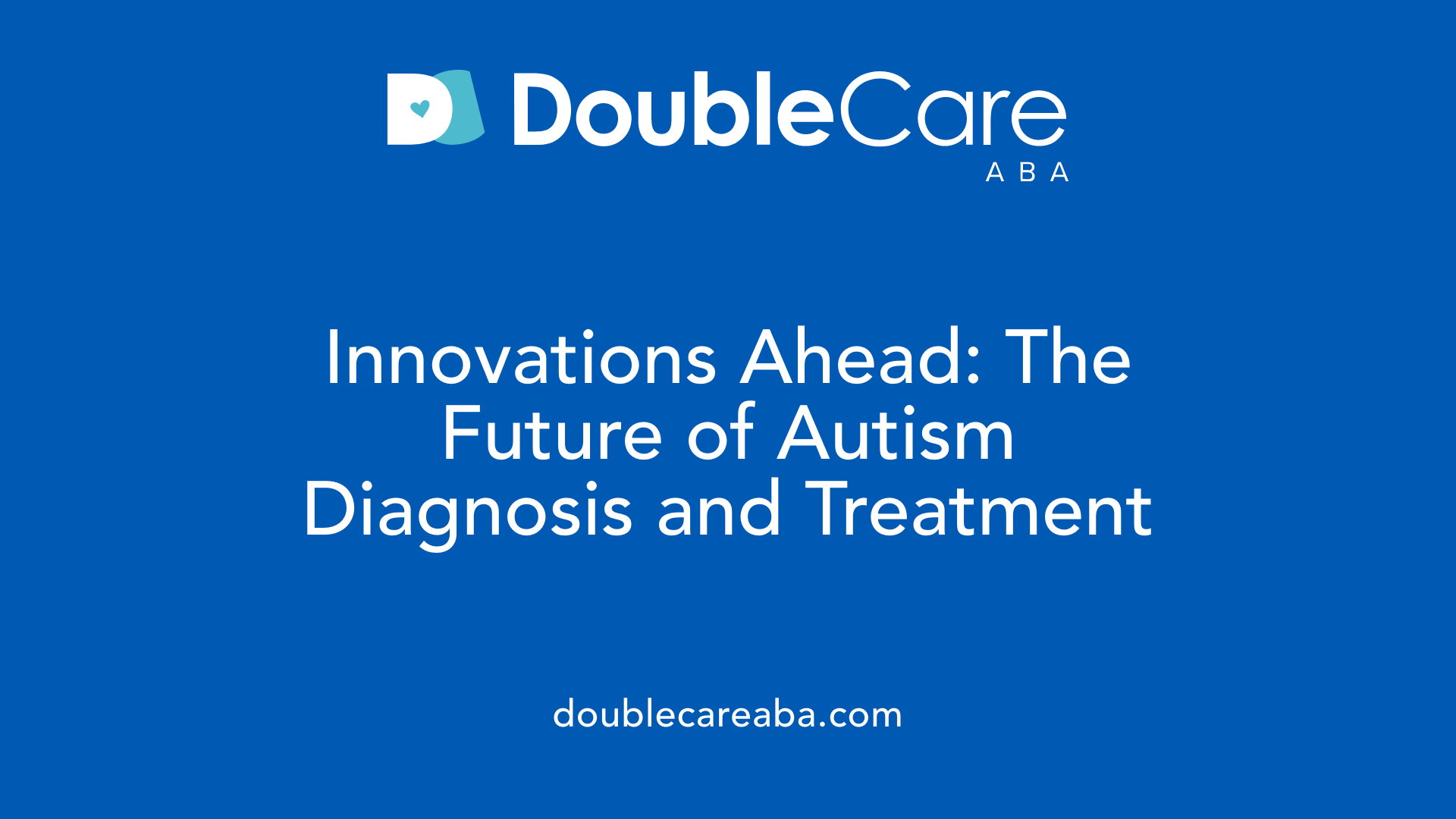
Advances in Screening and Assessment
Early and accurate diagnosis of autism spectrum disorder (ASD) is crucial for improving outcomes and quality of life. Future advancements will likely focus on more sensitive and specific screening tools that can identify autism at younger ages, including in diverse populations often underdiagnosed today, such as girls, minorities, and adults. Integrating digital technologies and biomarkers may enhance early identification, while universal screening initiatives will continue to evolve to capture a broader range of ASD presentations.
Integration of Personalized Approaches
Treatment and intervention strategies are moving toward personalization, tailoring therapy to the unique traits and needs of each individual on the autism spectrum. This approach considers co-occurring conditions like ADHD or anxiety, sensory profiles, and personal interests to optimize support. Personalized therapy plans will be supported by multidisciplinary teams, including medical, psychological, and educational specialists, to address the full spectrum of challenges and strengths.
Focus on Quality of Life
Future autism therapies will prioritize enhancing overall quality of life, not only reducing core symptoms but also improving social relationships, independence, and mental health. Given the higher risk of suicidality and digital media overuse among autistic individuals, interventions will increasingly include mental health support and strategies to manage behavioral addictions. Supporting transitions, such as moving to college or adulthood, with targeted programs will be essential to help autistic people thrive in varied environments.
| Aspect | Future Trends | Expected Benefits |
|---|---|---|
| Screening & Assessment | Use of biomarkers, technology-assisted tools | Earlier, more accurate diagnoses across diverse populations |
| Personalized Therapies | Tailored interventions considering co-occurring traits | Enhanced treatment effectiveness and patient satisfaction |
| Quality of Life Focus | Holistic approaches addressing mental health | Better social integration, reduced behavioral addiction risks |
| Support in Transitions | Targeted programs for college/adulthood transitions | Reduced social withdrawal and improved academic/employment success |
Community and Family Roles in Autism Support
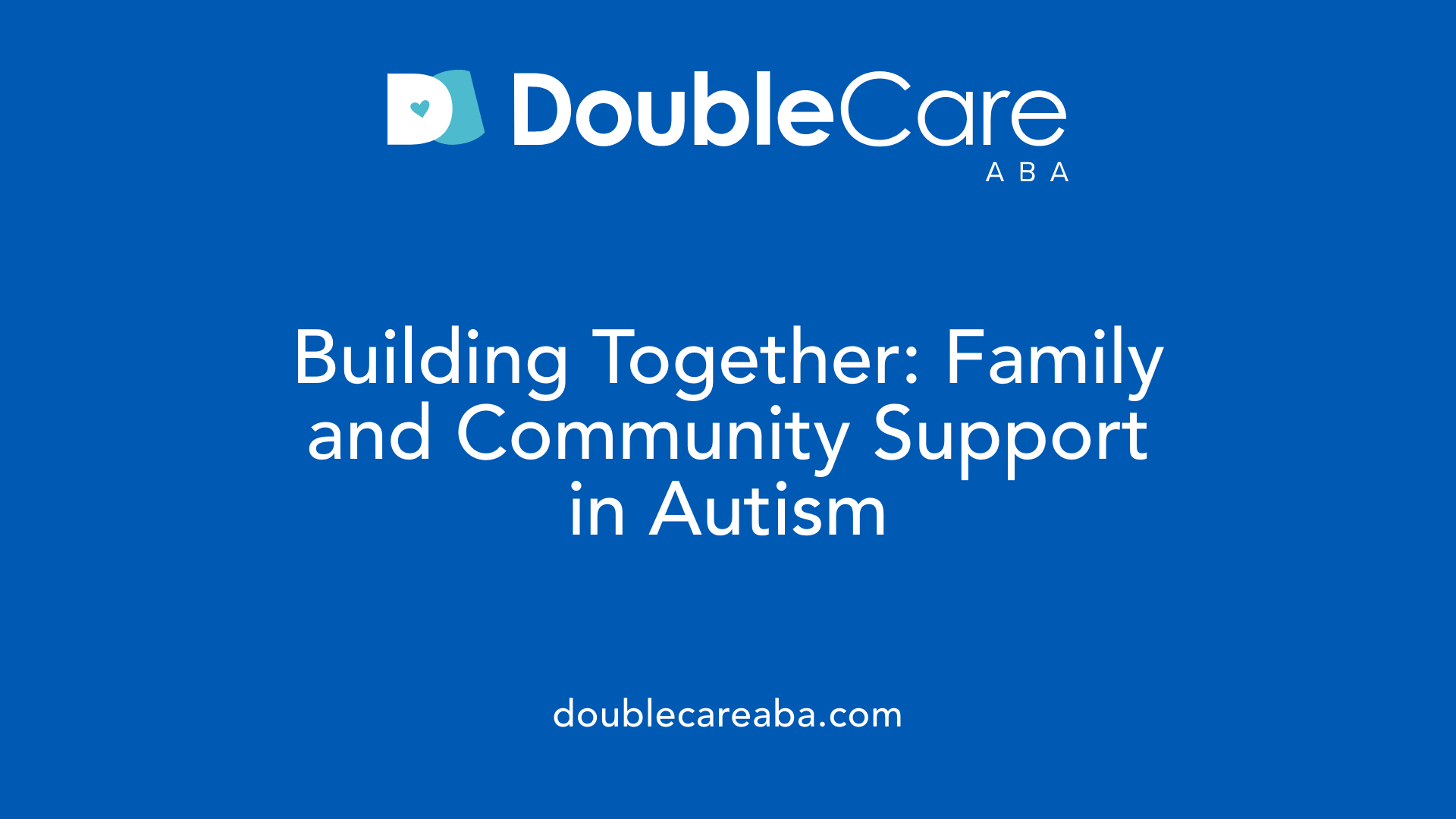
How Does Caregiver Involvement Benefit Therapy for Autistic Individuals?
Caregiver involvement plays a crucial role in the success of therapeutic interventions for autistic individuals. Parents and family members who actively participate in therapy sessions help reinforce learned skills at home, creating a consistent support system. Early diagnosis and active engagement of caregivers are linked to better developmental outcomes and improved parent-child relationships. This involvement also helps caregivers understand autism more deeply, enabling them to advocate effectively and tailor interactions to their loved one's unique needs.
What is the Role of Peer Support in Autism?
Peer support offers significant emotional and social benefits for autistic individuals. Inclusive peer groups provide opportunities for social interaction in a comfortable, empathetic setting, reducing feelings of isolation. Peer mentors or support groups can help autistic individuals navigate social challenges, boosting confidence and communication skills. Such networks foster a sense of belonging and understanding, essential for mental well-being, especially given the increased risks of depression and suicidality in the autistic population.
How Can Communities Build Inclusive Environments for People on the Autism Spectrum?
Building inclusive environments involves adapting settings to accommodate sensory sensitivities and social communication needs common among autistic individuals. Schools, workplaces, and public spaces can implement sensory-friendly designs and provide structured routines to support engagement. Awareness campaigns help reduce stigma and cultural biases that contribute to underdiagnosis, especially in girls and minorities. Community programs focused on education, acceptance, and support empower autistic individuals and their families, promoting full participation in society.
The Importance of Media Literacy in Autism Topics
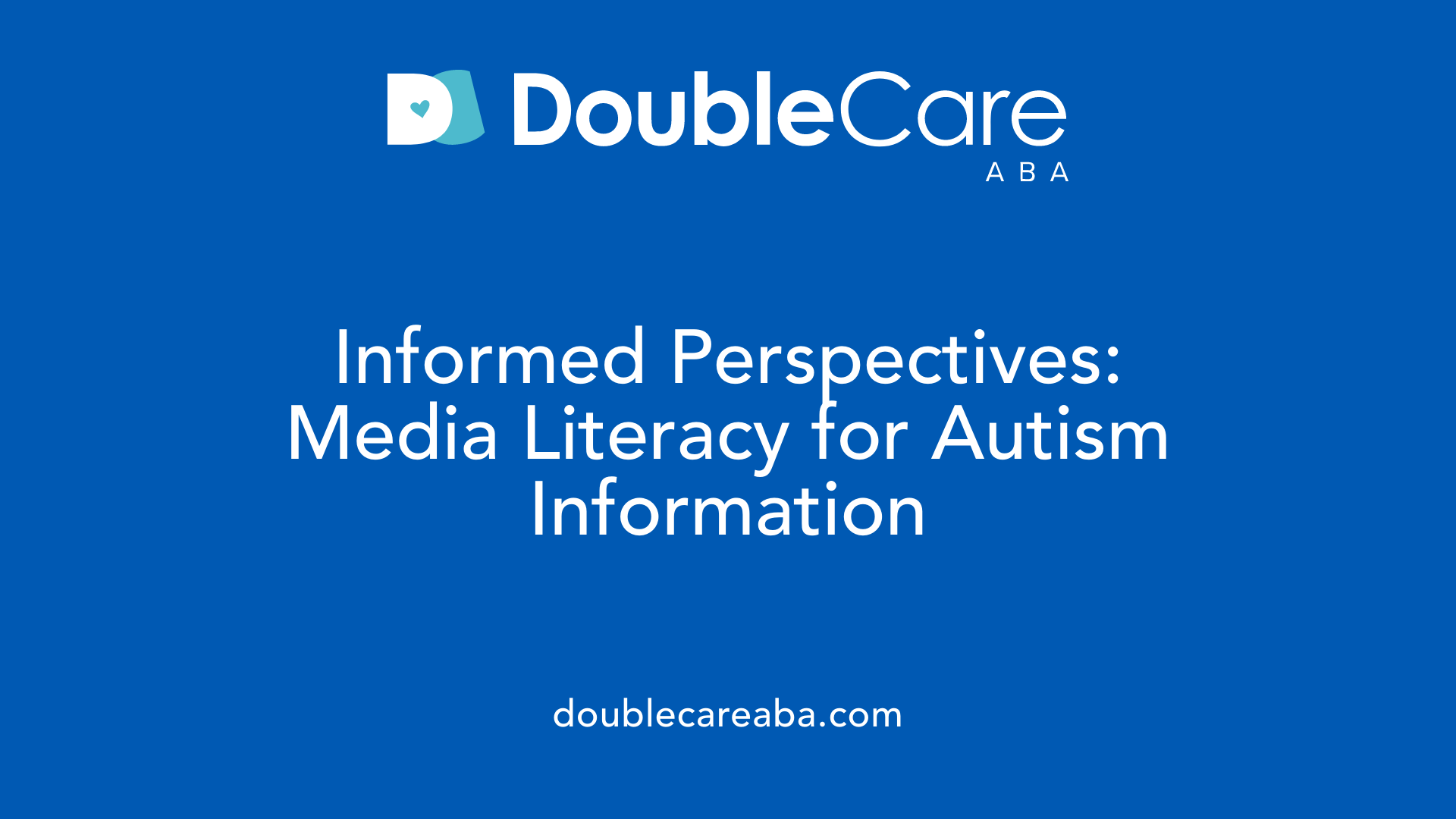
Evaluating Information Critically
When exploring topics related to autism, media literacy is essential. Because autism presents in diverse ways and overlaps with other conditions, such as ADHD and depression, distinguishing accurate information can be challenging. Critical evaluation allows individuals and families to recognize evidence-based advice and avoid misleading claims.
Avoiding Misinformation
Autism's complexity and evolving diagnostic criteria, like the shift from DSM-IV to DSM-5, have led to varied information circulating online. Misinformation can cause confusion about diagnosis and treatment options—making it difficult to understand that autistic traits can manifest differently across age, gender, and cultural backgrounds. Being media literate helps readers spot falsehoods and promotes informed decisions.
Engaging With Scientific Resources
To better understand autism spectrum disorder, engaging with reputable scientific sources is crucial. Early diagnosis improves outcomes, yet many remain undiagnosed due to biases and under-recognition in certain groups. Trusted medical websites, peer-reviewed journals, and official pediatric guidelines are reliable resources to learn about autism's nature, associated risks such as increased suicidality, and challenges like digital media overuse among autistic individuals.
By building media literacy skills, individuals can confidently navigate autism information, fostering better support and understanding for those affected by the spectrum.
Interpreting Autism in Public Figures and Beyond
While no public information confirms that Keir Gilchrist is autistic, exploring autism spectrum disorder, its diverse presentations, and available therapies like ABA provides a valuable framework for understanding the condition more broadly. Recognizing the myriad ways autism manifests and the importance of individualized, ethical support is essential, both for those in the public eye and the wider society. As awareness grows, so too does the need for accurate information, respectful discourse, and access to effective interventions that honor the unique experiences and strengths of autistic individuals.
References
- Autism and Technology Addiction
- Applied Behavior Analysis (ABA)
- Treatment and Intervention for Autism Spectrum Disorder
- Applied Behavior Analysis (ABA)
- Types Of ABA Therapy Jobs And Their Degree Requirements
- The effectiveness of applied behavior analysis program ...
- The effectiveness of applied behavior analytic interventions ...
- Applied Behavior Analysis (ABA)
- Applied Behavior Analysis (ABA)
- Applied behavior analysis














